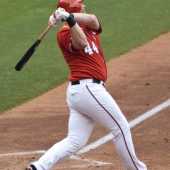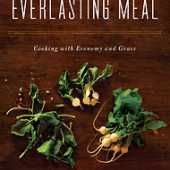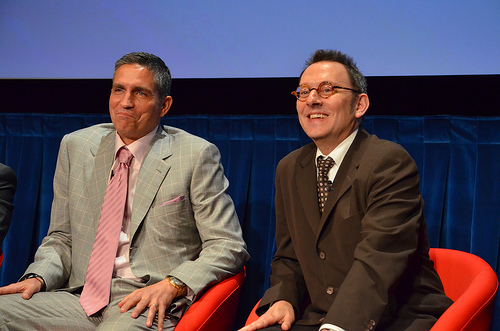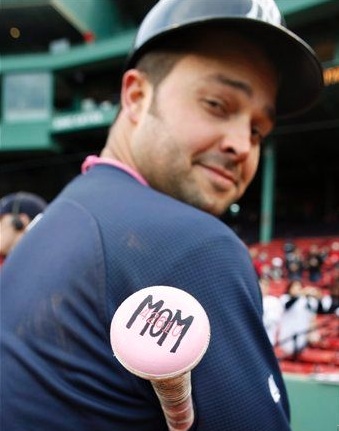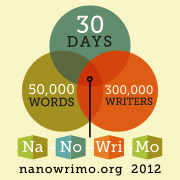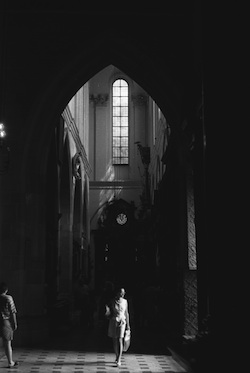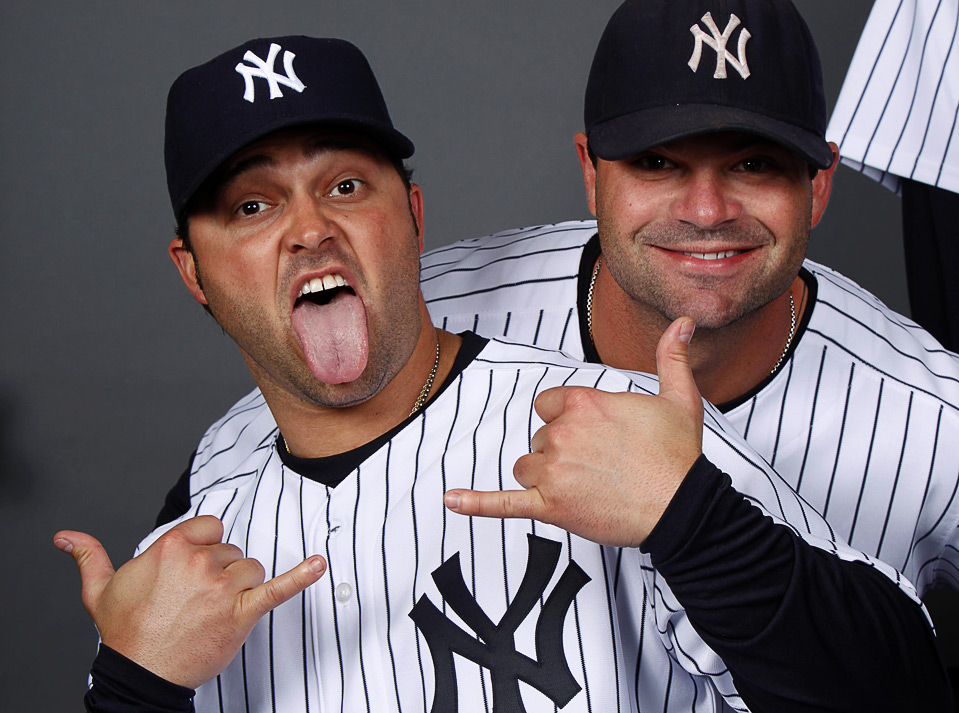Radioactive Waste 12 - Deep Borehole Disposal 2
Writing this blog has been a very educational experience. I have been aware of the problem of disposal of nuclear waste for a long time but lately I have been delving into the details. I knew that the Yucca Mountain Repository Project had had all its funding pulled recently, leaving the United States without any long term plan for permanent disposal. In addition, I found that the U.S. government is on the hook for millions of dollars in penalties for failing to fulfill a promise to the nuclear industry to have a permanent waste disposal option available by 1998.
Having read several recent analyses of the potential of deep borehole disposal of spent nuclear fuels and writing a blog post about it, I have to admit that it really does seem to be a far superior alterantive than anything else on the horizon. It would be safe, economical, incremental and distributed around the country. The big question is why a good alternative to a repository in a place like Yucca Mountain has not been taken seriously. I suppose that one explanation is that with the size and inertia of the nuclear industry and government oversight, any proposed disposal system would have to have major players in industry and government supporting and promoting it or it would never get the time of day. The problem with deep boreholes is that they would not have the up front cost of a place like Yucca Mountain and a major nuclear contractor would not be able to make as big a profit. But that is just speculation. The fact is that we have a good proposal for disposal that does not seem to be being pursued.
What would be required for deep borehole disposal to move forward? There was a major study by Sandia Labs in 2009 about the deep borehole alternative that was very positive in its conclusions. They provide a detailed model to analyze the deep borehole proposal. One of their conclusions was that it was time for a full pilot project to test this alternative.
There is an excellent slide show that provides a lot of useful information that is an attachment for a 2012 nuclear engineering course at the University of Illinois. They have some estimated cost numbers that will be useful. It turns out that drilling the borehole is the cheapest part of the project by far. They estimate a cost of $20 million. They suggest that it will cost $10 billion dollars for site characterization and license application. (I hope most of that cost is site characterization.) $20 million for operation, monitoring and decommissioning costs. And, finally, $10 billion for transporting spent nuclear fuel. I would think that if a site adjacent to a nuclear reactor with a full spent nuclear fuel pool is chosen, there should be almost no transportation costs so maybe that number goes away. So, bottom line, we should be able to run a full test of a deep borehole disposal installation for $35 to $40 billion dollars.
The other thing that has to happen to permit this is that the Nuclear Waste Policy Act would need to be changed. Currently it limits underground waste disposal to Yucca Mountain. So, in addition to legislation for the pilot project, there would also need to be legislation to change the NWPA. I firmly believe that this pilot project should become a priority for the U.S. Government, the U.S. nuclear industry and the activists who are concerned about disposal of spent nuclear fuel.
Sandia Laboratory Deep Borehole Schematic:
Lindsay Lohan has a wicked fight with mom Dina Lohan
So much for Lindsay Lohan heading to New York City and staying out of the tabloids! A new audiotape has surfaced that captures Lindsay and her mom, Dina Lohan, in a major fight. The mother and daughter can be heard squabbling about money, and at one point, Lindsay even claims that Dina is under the influence of cocaine.
Yikes! Lindsay and Dina Lohan are no strangers to bad press, but this definitely ranks way up there as far as scandals go for both of them. Things start out bad and go downhill from there.According to reports, the recorded fight between Lindsay and Dina Lohan happened as the two left a New York City nightclub together. They'd both been partying (shocking!) and were heading to Dina's house in Long Island around 4 a.m.. when they started arguing.
On the tape, posted by TMZ, Lindsay Lohan can be heard screaming at her mother and then calling her dad, Michael Lohan, for help, claiming that Dina was "saying disgusting things" to her and that she was "dead to her now." Lindsay tells her father that the two are fighting over a $40 thousand loan she gave to Dina to "save her home from foreclosure." In short, daughter wanted mom to give the money back!
It gets worse: Lindsay can also clearly be heard telling Michael Lohan that Dina was "on cocaine" and that she has a "gash" on her leg from the fight. Additional reports suggest that when the limo carrying the Crazy Lohan Women did finally arrive at Dina's house, police were already there waiting. No charges were filed.
Lindsay Lohan's entire family is completely nuts. If I had any doubts before, I definitely don't now. No wonder Lindsay's such a train wreck: Listening to the fight with her mom, it's clear that Dina Lohan is a hot mess as well. And don't even get me started on Michael Lohan -- he's as much of a problem as his ex-wife. It seems like Lindsay Lohan really does need to get as far away from her screwed up family as possible, if she ever wants to lead a normal life!
The "Person of Interest"
To recap, since I've been digging into the stats and doing some other things rather than writing more updates, the mantra of the Spectometer is PRODUCTION + PLATE SKILLS + AGE-ARC.
For those prospects who provide all of those sought-after things at once, we declare them as having a "Golden Year," and they are serenaded by freaky-'70s-era David Bowie (if you watched the YouTube video). They also have a very high chance of being at least relatively successful as major-league hitters. The great majority of successful major-league hitters had such seasons in the minors prior to age 23, and the great majority of minor leaguers we've identified as having such have gone on to success in the majors.
But not everyone who has success in the majors has the "all-around" abilities to get the "Gold," so how do we find the rest of the guys?
I have identified three "profiles" of guys who succeed in the majors despite not having the "all-around" abilities. The guys who fit the profile are identified as "Persons of Interest" (and since I'm obviously not the kick-backside secret agent dude, I must be the nerdy computer guy):
THE LOW-K POWER GUY: The tip-off for the Low-K Power Guy is the ability to hit with authority while maintaining a low (sub 20%) strikeout rate. I use a stat I called "Authority Percentage" (AP), but which is really just ISO with slightly different math. I need to use the different math in order to plug the number into my "Plausibility Index" (for the basis for said math, see the "Allegory of the Window").
- (I actually don't really know if it's an allegory or not, but I know that Plato's is called the Allegory of the Cave, so I went with that. My son asked me the difference between an allegory and a parable the other night, and I didn't know. Maybe DrD the theologian knows?).
- Now I'm even farther off course, so feel free to skip: ISO is (2b + 2*3b + 3*HR) / AB ; while AP is (2*2b + 3*3b + 4*HR) / AB. The reason is ISO is SLG - BA and AP is SLG with singles not counted. They measure the same thing, but I need AP on my spreadsheet to calcuate "singles needed for .890 OPS", which is the enumerator of my "Plausibility Index" (the denominator is balls in play minus extra-base hits, which is, itself, a "proxy" for "random-y" balls in play not hit with authority). AP will be about 80 to 120 points higher than ISO (which number will be equal to XBH / AB ). OK then.
The system looks for AP over .300 (which is ISO of .190-ish) and a K% under 20 percent. What it means is that you've demonstrated the ability to hit the ball with authority without missing too often. The "big catch" of this profile is Mike Morse, who otherwise would not show up as a promising prospect.
THE PLATE SKILLS TECHNICIAN: The tip-off for the Plate Skills Technician is the ability to "win plate appearances" to the tune of a "Hitter's +/-" of +3.0 or higher, while attaining a minimum level of Production ("Production Percentage of 19% or above [that's (XBH + BB) / PA]).
Remember, you have to hit the ball with authority to "win plate appearances" too (not just draw walks and avoid striking out), but these are likely guys who don't have lights-out power (more Olerud than Fielder). This is the category in which Ackley and Seager first appear on THE GRID.
When a really good Plate Skills Technician gets a really strong BABIP, he will probably be in line for a batting title.
THE SLUGGER WHO WALKS: The final profile accounts for the Mark Reynolds of the world. To overcome a high K%, you gotta put balls in the seats (HR% over 4.0%), but, even then, you've got to draw walks to survive (BB% over 8.5 percent). Yes, Casper Wells and Carlos Peguero sneak onto THE GRID in this way, but not in eye-catching fashion. Wladimir Balentien and Alex Liddi are the ones who show up in this category at a young age.
POTD Nick Swisher (Scouting Report) - The GOOD
.
Q. Everybody knows who Nick Swisher is. What is the Mainframe's visceral reaction to him?
A. That he's a good #3 bat for a bad team. Or a mouthwatering #7-8 bat for a good team.
The Mainframe doesn't mean that as a backhanded compliment. Every team needs an Edgar Martinez type hitting third (or so). An OBP-first guy, a guy who is always on base, and a guy who can sting enemy pitching with 25-ish home runs and plenty of doubles. On the other hand, #3 hitters with 88 RBI don't hit in the middle of the order for big offenses. Swisher's a MOTO hitter... for the Royals or A's.
.
Q. Still sounds backhanded.
A. Well, Ron Shandler wrote before 2012: "His consistency means you can bid on 2010 (.290/.360/.500) as his upside, and 2011 (.260/.370/.450) as his downside, at least for the next few years. That's as comforting as a smoooooooth, close shave at Mayberry Barber Shop."
I second that emotion. Nick Swisher is one whale of a classy ballplayer. Reminds me of Raul Ibanez, a little less SLG and a little more OBP. Swisher and Ibanez are the "old player skills" and the "young player skills" bookends on that 120 OPS+ corner outfield bookshelf.
.
Q. How does the scouting clipboard grade him out?
A. His swing could bring tears to your eyes. It's wonderfully balanced, mobile and agile yet somehow anchored on the back leg. He drops his CG just a little lower than it should be dropped - which I love. This 4-inches-too-low CG sort of underlines the "ki" factor in his swing.
He's very short to the ball, has just about the quietest head in baseball. Smooth, powerful torque, just the right amount to lever the ball without getting elaborate. Perfect swing plane.
Dr. D would be hard-pressed to design a better baseball swing. This guy wasn't the star of Moneyball for nothing. He is a hitter the way you draw it up on the chalkboard.
.
Q. Overall impact?
A. If I were Swisher's agent, I'd point out his WAR from the last three years, those being 4.1, 3.8 and 4.0 ... how many players could say their lowest WAR in that time had been 3.8?
He's #38 in baseball for WAR over the last three years; here's a WAR grid on it.
Over his career, he's averaged 90 walks (!), 35 doubles and 28 homers per 162 games, plays quality defense, is supposed to be a good guy. He's a little undersold by the fans, as Rauuuul was, and there isn't a ballclub in either league that wouldn't enjoy having him in the lineup.
On the other hand, let's not lose perspective: he's had 90 RBI twice in nine years. That is, he's had less than 90 RBI seven times in nine years, and will again next year. Do you want your big move to net you 82 RBI next year? That he's a fine ballplayer is clear. Whether he's going to be the right guy to commit big dollars to, the guy who jells your lineup, is another question.
NEXT
Why I do NaNoWriMo
November is National Novel Writing Month, an annual challenge in which participants attempt to write 50,000 words during the course of the month. Although I am not always successful, I participate in NaNoWriMo every year, and have ever since 2006.
I've also been a freelance writer since 2005, so one might question why it is that I got started doing NaNoWriMo. Early on, I found that as a full-time freelancer, I rarely ever got around to working on my own projects -- I always felt guilty about neglecting paying work from clients in order to write fiction or work on an ebook idea of my own. Yet not just writing for a living, but writing fiction, has been my dream ever since I was old enough to really know what I wanted to be when I grew up.
Enter NaNoWriMo.Doing a challenge like NaNo, complete with a goal and a deadline, forced me to get both my client work and my own writing done. Fifty thousand words in a month works out to about 1,667 words per day, which is a significant -- but not impossible -- commitment. At a minimum, it requires an hour a day, but depending on how fast I write (and that varies according to the type of scene or how immersed in my writing I am at the time) I more often need an hour and a half or two hours.
I "won" (reached 50k) the very first year I did NaNoWriMo, but for years after that I fizzled out shortly after starting -- I think because I never had another story idea that was compelling enough to inspire that kind of speed in my writing. Last year, however, I started used NaNoWriMo to finish the first in a series of novels that are extremely compelling to me. (No, I don't always follow the NaNoWriMo rules of starting a new novel at the beginning of the month -- I just keep track of new word count during the month if I use it to continue working on a project I've already started.) Then, this year, I participated in Camp NaNoWriMo for the first time, and started the second book in August. I "won" both sessions, and plan on using next month to finish the second book.
What about you? If you do NaNoWriMo, or are planning to do it this year, why do you participate? Is it just for fun, for motivation, or for another reason, such as extra credit in school (I have heard of some teachers offering that)?
Pop Culture Happenings: Walken Reads Honey Boo Boo and more buzzworthy dumps
How I celebrated Banned Books Week 2012
Last week was Banned Books Week, and I celebrated by reading one of the books in the list of the top ten books challenged in 2011: Brave New World by Aldous Huxley. Fair warning: This review does contain some spoilers!
Some friends and I had a discussion the other day about why there is almost always at least one classic on the list every year. I'm pretty sure it's because most instances of books being challenged occur in the schools -- patrons of public libraries don't typically challenge books being on the shelves, but parents and other adults are constantly trying to dictate what kids ought to be able to read.
They usually challenge books that are being taught in the classroom, or contest whether certain books ought to be accessible in the school library. I'm sure that most, if not all, of the classics that make it onto the list were part of the curriculum.
Anyway, Brave New World is often on the list, as are a few other classics. The reasons given for the book being challenged in 2011, according to the ALA (American Library Association), were: "insensitivity; nudity; racism; religious viewpoint; sexually explicit." Of course, the nature of the dystopian world is such that the people are conditioned to be highly racist, irreligious and rather callous about sex, so you simply couldn't have the story (or the message, which is the whole point of teaching the book) without the aspects that are so often challenged.
I didn't know anything about Brave New World before reading it, except that it is about a dystopian future and one of the early classics of science fiction. In the book, society has eliminated people's unhappiness almost entirely, at the same time creating a perfectly functioning society. The society holds Henry Ford, the creator of things like assembly lines and interchangeable parts, in the highest esteem -- he is essentially their messiah, and a book about him is held in the same regard as religious texts are today.
In order to achieve this perfect society, however, where no one is ever unhappy and everyone's work gets done, the engineers of the society had to do away with things such as free will, love, compassion, religion, and -- except in an elite minority -- intelligence. People can have sex with whomever they want, and in fact, are expected to do so with a wide variety of people, since intense relationships are viewed as a source of unhappiness. Babies are not born anymore, but are grown in a lab environment, and children are raised via strict conditioning, a.k.a. mind control, according to their place in society. The harder-working castes are also genetically engineered to be ugly and unintelligent, so that they will never question their lot in life. In short, the castes are designed to work together as in a well-oiled machine (hence all the references to Ford) in order to produce the seemingly perfect society.
The story is a bit slow to get started, since the author has to make you really see and feel what society has become before introducing his character, John, also known as the Savage, who was accidentally born at a "Reservation" -- a place where Indians still live in the old ways (and are essentially locked in so that they won't contaminate the perfectly controlled society around them). John's parents were both higher-caste people, so he is intelligent but untouched by the conditioning that controls everyone in "civilized" society. The result is that, when he rejoins civilization, he finds a world that -- to him -- holds no hope.
It's an excellent piece of early science fiction, but even better is the commentary on society -- as pertinent to today's society as it no doubt was when it was first published in the 1930s!
Out of the Limelight by James Bagworth
Although I usually enjoy a good murder mystery or thriller, this time of year, I find late 18th century mysteries, especially those in the genre of Edgar Allen Poe, especially attractive. The novel I read this past week, Out of the Limelight by James Bagworth, fits that description. The book begins in October 1879, and with it’s dark Victorian setting, it is a perfect tale for this time of year, when the spirits become restless.
The story features a varied and eccentric cast of characters, from a humble flower girl with a shocking secret, to a pair of comedians, a beautiful diva and a charming and well-respected doctor. Although the characterizations are a bit stereotypical, the author plays on those stereotypes in an amusing fashion.
Through this convoluted and fast-paced tale, Mr. Bagworth weaves deft touches of humor along side visions of Gothic horror. Although the story is set in Victorian England, it is far from stodgy, leading me to wonder if the general Victorians were less straight laced than I’d assumed.
I usually pride myself on being able pick up on subtle cues in the story line to figure out who the murderers are and other plot twists. I was however, occasionally and pleasantly surprised by Out of the Limelight. Too me, this made the story even more difficult to put down; I just had to know who did what!
Have you read this story, and if so, did you enjoy it? Otherwise, are you a fan of Victorian Gothic fiction, especially during the Halloween season? Please share your thoughts.
POTD Nick Swisher (Scouting Report) - The BAD
.
Q. What could be bad about a nice guy who does everything well?
A. I guess I'm confused about the proposals for 5-7 year Swisher deals at big money.
On the hardcore saber sites, I'm used to seeing calculations that take a Nick Swisher's 4.0 WAR, that set it at 3.5 for next year, and amputate 0.5 WAR per year until it hits zero. Calculations like these always seem to wind up proving that Albert Pujols, Ryan Braun, and Prince Fielder are going to be bozos in three or four years. You think they won't do that with Josh Hamilton? :- )
Now here we are with Nick Swisher, who actually is the type of player who is done at age 34 (in this case, 2-3 years from now, max), and all of a sudden age is a nonissue.
I'm confused. What happened to the age-arc paradigm that rules almost every free agent signing to be insane?
.
Q. Would Swisher actually age quickly?
A. Here is a Derek Zumsteg article that follows on Bill James' original research. He used the paradigm to explain Richie Sexson's crash, after Sexson's two falloff years in 2006 and 2007.
Zumsteg explains it well, and James (and Dr. D) take the principle as axiomatic. Fast-twitch hyperathletes, those who have SPD and contact ability, project to play better at 35 than "intelligent" players who have Three True Outcomes skills. Ichiro, Rickey, and Lofton are at one end of this spectrum; Jack Cust and Nick Swisher are at the other end of it.
.
Q. Does Swisher look like he's aging?
A. He's got a glorious swing, but it's slowing already. Watch him drag the bat through the zone on this double. Now, that's an extreme example; Swisher can be quicker than that at times.
But we're talking about his age-31 season with that swing-through-water. Where's he going to be at 34?
..............
That's his bat launch. Home Run Tracker gives an idea of his throughspeed. His average home run this year was only 388 feet, and he hit 24 of them in Yankee. It's not like he's Josh Hamilton up there.
We're not saying that Nick Swisher is something brown and unpleasant that you step in on the sidewalk. He's a classy player. But 7 years starting at age 32? I'd seriously be nervous about four years.
...............
His cold zone, as a left hand hitter, is inside (except at the knees). That's the area of the strike zone that emphasizes quickness. Swisher doesn't have a lot of quickness at the plate; right now he's got average quickness. Not "average" quickness compared to other $100M players; average quickness relative to Brendan Ryan and Eric Thames.
Swisher can hit, don't get me wrong. He sees pitches extremely well. And his swing is ready to inflict damage on pitches he can handle. The question, as with all players, is what happens when a hole shows up at age X, and he gets "booked" on that hole.
.
Q. How are the sabermetric comps?
A. We're piling on at this point, but here are the b-ref.com comps - read them and weep. From age 32 to the end of their careers, Swisher's comps were out of baseball in four years. Not "average players" -- out of baseball. That's pretty weird for ten players of that quality. Not often you see a b-ref.com comps list with a 4 in that years remaining column.
I would take Jason Bay as Swisher's #1 similar pairing, as b-ref.com also does. Here is Bay's b-ref.com card: compare the Per 162 Games totals for HR, BB, K, and everything else, to Swisher. Walks the same. Homers the same. Bay came up at age 24-25, like Swisher did, the same. Everything the same.
Bay, a classy hitter with an outstanding EYE, eighty walks per year, signed a big contract at age 31 and immediately pulled a Richie Sexson. Age 31 was his crash year.
Dr. D wouldn't imagine that Swisher crashed next year, but if he did, it would be nothing that Jason Bay and a ton of age 32-33 hitters of 120 OPS+ quality hadn't done.
NEXT
French Chic
French fashion house Chloé recently released their spring | summer 2013 collection as a celebration of their 60th anniversary. The collection features emphasized shapes and silhouettes, a neutral color palette with selective bold hues, feminine accents and boxy styles with sheer details. The runway models showcased the collection with little or no jewelry, structured hang bags and strappy metallic heels with pointed toes. Be inspired and add a little French chic to your warm weather wardrobes with Chloé's spring | summer 2013 collection.
A cropped, zippered poncho with a sheer midriff panel? It's a do.
Wear it with dark skinny jeans and knee high mocha boots on a brisk fall day.
This beautiful peach design is dreamy and frilly in all the right ways: long hem and clean lines.
Pair it with brown or metallic hues for a weekend fête.
Cut out shapes and designs are making fresh appearances in spring collections worldwide.
The clean white contrasts the bold geometric style pleasantly and perfectly.
You can't go wrong with pin striped pants in cream and caramel shades.
A cropped top with sheer accents and metallic stilettos complete the casual-chic look.
Mustard floral pants, a light, white blouse and sandals: oui!
Make the floral trousers the focus of your outfit by pairing it with neutral details.
Combine a sheer, purple peplum dress with neutral shorts or skinny jeans
and structured suede heels for work and après-work happy hour.
Give this sparkly gold frock the attention it deserves
with a formal occasion, oxblood heels, a cocktail ring and and elegant updo.
